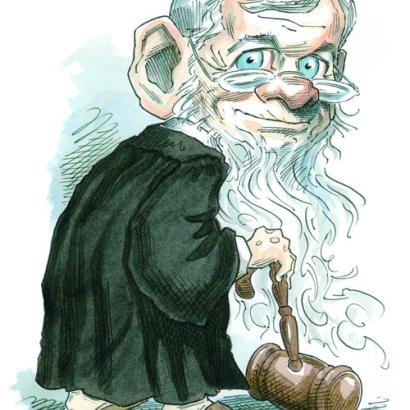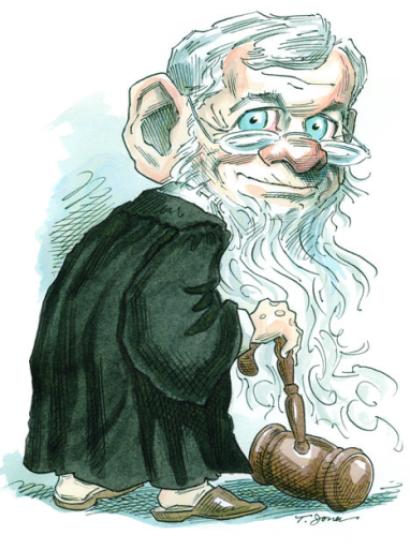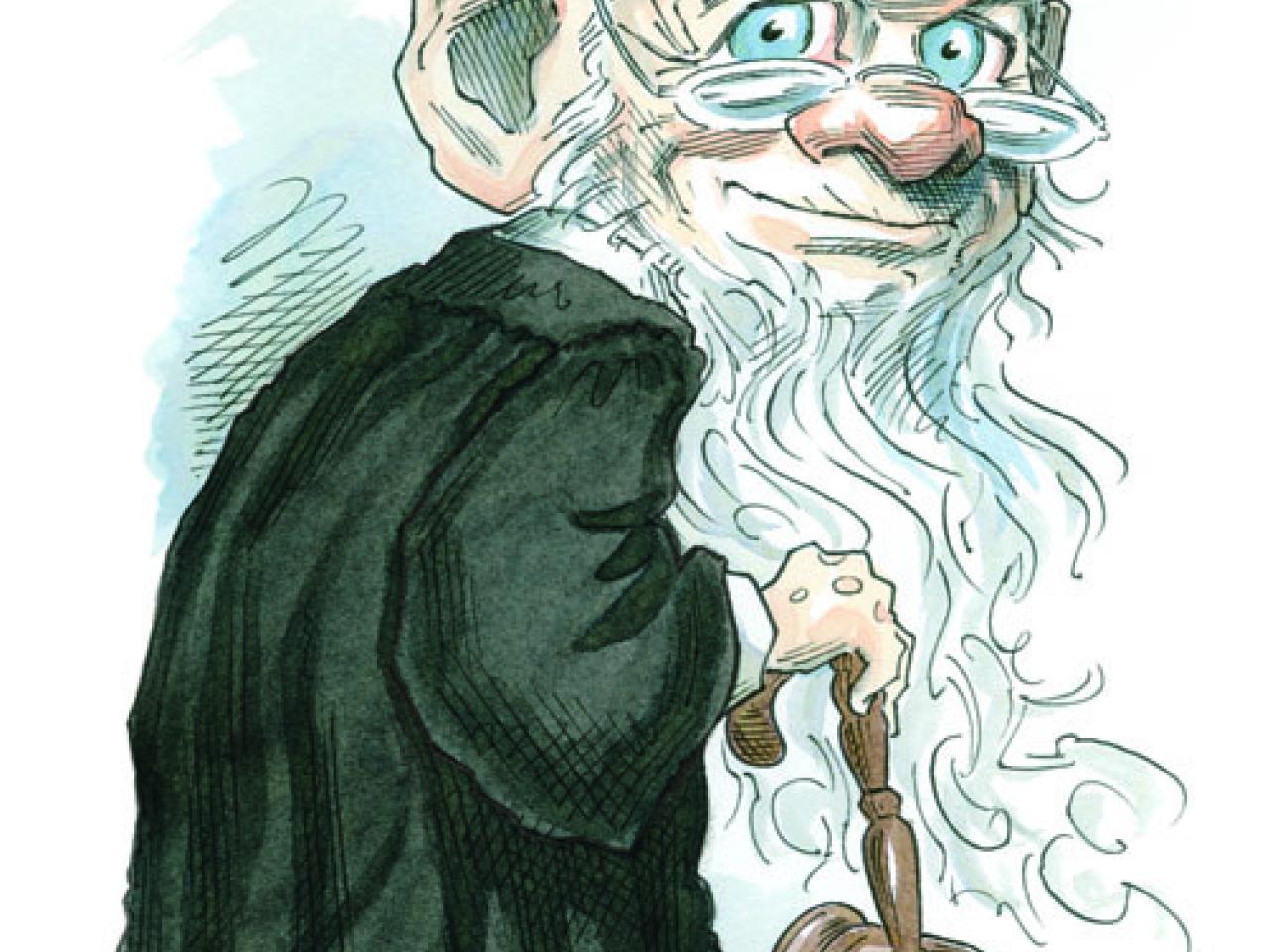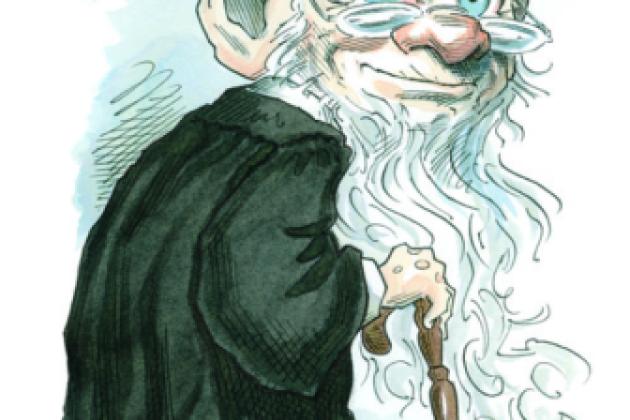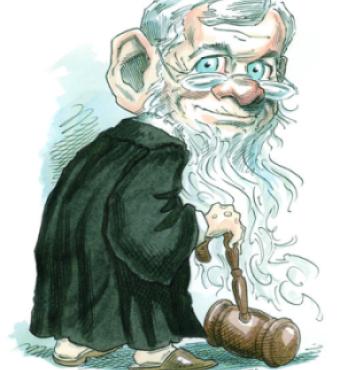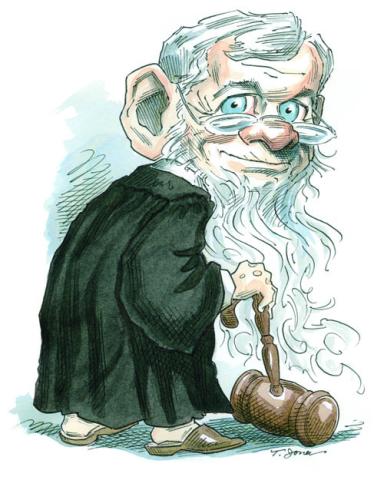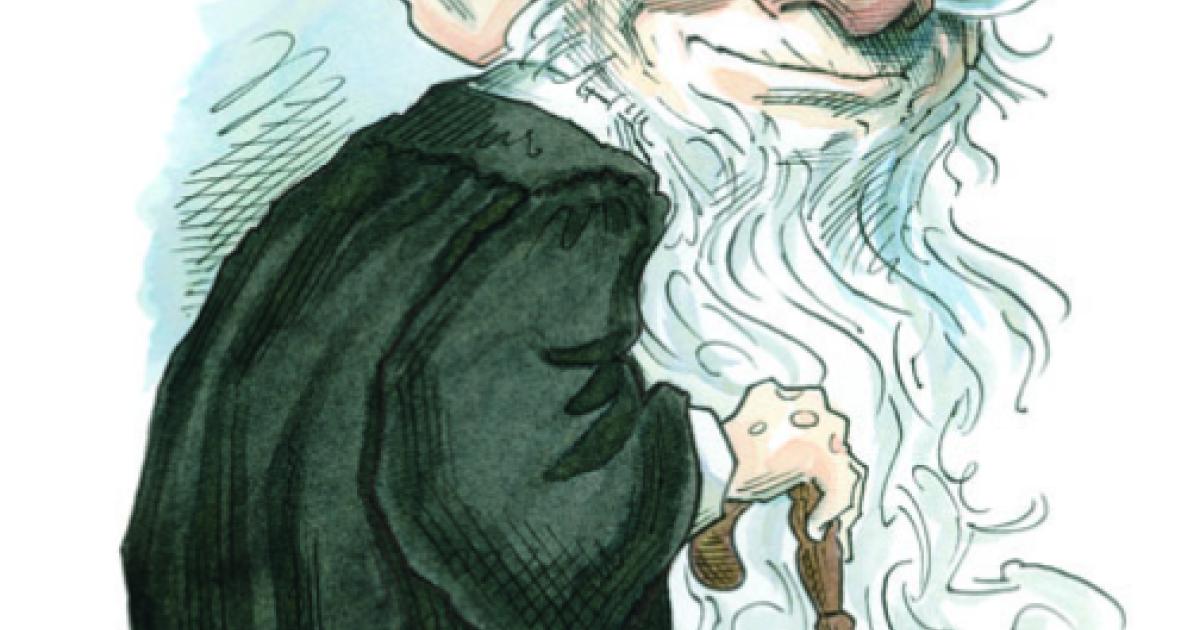- US
- Contemporary
- Law & Policy
- Regulation & Property Rights
- Campaigns & Elections
- Politics, Institutions, and Public Opinion
- The Presidency
- History
Every American presidential election presents different burning issues. The Vietnam War dominated three consecutive elections from 1964 to 1972. Scandals from Teapot Dome to Watergate have figured prominently in others. Recessions typically thrust economic issues to the forefront, leading one presidential campaign to adopt the famous campaign imperative, “It’s the economy, stupid!” Other issues from abortion to forced busing to education to the environment have made major appearances in national campaigns; this year the issue of the federal health care mandate is unavoidable.
Issues come and go, and the impact of national elections in resolving these issues sometimes is minor or fleeting. But one issue that rarely makes even a cameo appearance in national campaigns nonetheless may be the most important and enduring consequence of electing a president: the party that controls the White House also controls the appointment of the federal judiciary. This is one matter where the party in power, especially over the past several decades, makes a decided difference—which in turn directly affects the lives of every American.
Judges typically operate in relative obscurity. Few Americans—other than lawyers who appear frequently in court—can name more than a few members of the U.S. Supreme Court, much less judges on other federal or state courts. Yet judges are powerful and important. They make decisions every day about religion, speech, property, business, education, civil rights, and myriad other issues that touch all of us in direct and immediate ways. They set the rules and guide the proceedings by which criminal defendants are tried and punishment is meted out. Ultimately, they determine whether our most fundamental rights are enforced or destroyed.
And yet, come election time, almost nobody thinks about courts and judges. Why? Perhaps because we are taught in civics class that judges are insulated from politics. Federal judges, of course, have lifetime tenure and can be removed only through impeachment. Over the course of history, few have been removed. During their tenure, they enjoy an independence from political influence that most public officials can only dream about. This independence is a vital part of our republican system of government, for judges who are dependent upon the political branches of government (that is, the executive and legislative branches) are likely to be little inclined to hold those branches to the boundaries of their constitutional authority or to protect individual rights against government abuse.
But federal courts are in fact political institutions. Judges are appointed by the president, with the advice and consent of the Senate. The appointment and confirmation of judges are enormously important powers precisely because judges are appointed for life. The Senate confirmation process in particular is important because it is the last democratic checkpoint before individuals are invested with enormous lifetime powers. Every American has a vital and direct interest in the appointment and confirmation of federal judges—which raises greatly the stakes in electing those individuals who have the power and responsibility to appoint and confirm them.
POWER THAT OUTLASTS A PRESIDENT
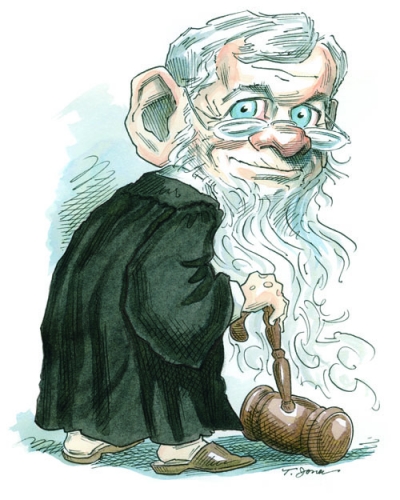
Lifetime tenure makes federal judicial appointments one of a president’s most important and lasting legacies, for most of the judges will far outlast the administration that appointed them. Ronald Reagan is four presidents removed from the present occupant of the Oval Office, yet two of his appointees to the U.S. Supreme Court—Anthony Kennedy and Antonin Scalia—remain there. Justice Scalia has been a leading conservative influence throughout his tenure and Justice Kennedy is now the swing vote on the court—so that Reagan continues to exert enormous ongoing influence over the nation’s course more than thirty years after he was first elected and many years after his death. At the same time, the current Supreme Court is precariously balanced along philosophical lines. The five conservative justices usually vote together in contested cases, and the four liberal justices almost always vote in lockstep. Accordingly, the shift of a single justice could tilt the court’s balance sharply to the left—and if that happens, the liberal imbalance could remain that way for a generation, even if there were conservative presidents along the way.
Opportunities for presidents to nominate Supreme Court justices are rare, and opportunities to shift the court’s balance rarer still. Once a fairly solid conservative majority emerged on the court in the 1990s, it survived eight years of the Clinton presidency and, so far, three years of the Obama presidency. Although both Clinton and Obama named justices, in each instance a liberal replaced a liberal. But of course, the new justices were much younger than their predecessors, thus fortifying the liberal wing. The replacement of a single conservative justice by a younger liberal justice could lock a liberal majority into place for a long time. The replacement of older liberal justices with younger ones makes it much more difficult for a conservative president to influence the court’s direction. Similarly, the replacement of a liberal justice by a conservative one would cement the court’s conservative majority, and the replacement of older conservative justices with younger ones would strengthen it.
While appointments to the Supreme Court are increasingly rare, appointments to the lower federal courts are not, so that even if a president has no Supreme Court nominations at all, he or she still can deeply influence the course of the judiciary, especially given that the vast majority of federal cases are decided by district courts and courts of appeals. Recent presidents have named nearly one-quarter of all federal judges during each four-year term. Over two terms, Reagan appointed 49 percent of the federal judiciary, while Clinton named 43 percent over his eight years in office. Moreover, the number of federal judges often increases, giving the president at such times a special bounty of judicial appointments.
IDEOLOGY AND THE LONGER LIFETIME
Two developments have increased the importance of Supreme Court nominations. First, nominations tend to be increasingly ideological. In days gone by, it was difficult to predict a justice’s philosophy even if you knew his or her party affiliation. Some presidents attempted to pack the Supreme Court for specific reasons. Abraham Lincoln, for instance, named justices who he believed would support his controversial Civil War measures. And after a bare majority of the Supreme Court repudiated some of his early New Deal ventures, Franklin D. Roosevelt famously proposed expanding the size of the court so that he could shift the majority. Justice Owen Roberts’s “switch in time that saved nine,” in which he moved from New Deal opponent to supporter, rendered unnecessary Roosevelt’s deeply unpopular threat. Still, even the justices appointed for particular purposes by those presidents were unpredictable and divided on other issues.
Throughout history, justices in landmark cases frequently departed from the philosophies of the presidents who appointed them, and a partisan divide on the Supreme Court was the exception rather than the rule. That changed, starting with the election of Reagan, who was far more systematic and successful than his predecessors in appointing judges and justices who shared his judicial philosophy. Since Reagan, Republican presidents have tended consistently to nominate conservative justices and judges, and Democrats have nominated liberal justices and judges with similar determination and success. In the Supreme Court, the principal exception was Justice David Souter, a consistently liberal justice who was nominated by the first President Bush. Even Justices Sandra Day O’Connor and Anthony Kennedy, occupants of the court’s ideological center who were appointed by Reagan, have moved constitutional jurisprudence in a conservative direction. Democratic presidents since Reagan, though so far having had fewer appointments, have a perfect record in appointing justices with liberal philosophies.
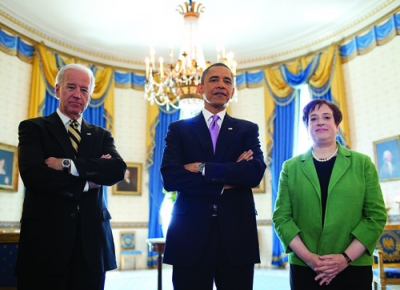
President Obama and Vice President Biden meet with then–solicitor general Elena Kagan before the president announced her as his choice to replace retiring Justice John Paul Stevens. Kagan, who is fifty-two, could serve on the Supreme Court for decades to come—a period comprising perhaps nine presidential terms.
Put another way, neither party has made a “mistake” in Supreme Court appointments in more than two decades.
That is not to say the justices are partisan. Quite the contrary: there are few cases in which the justices’ partisan affiliations influence their decisions. Rather, each of the justices has sincere, deeply held philosophical views on legal issues. Nor is that divide, much as some conservatives might simplistically wish to describe it, between judicial activism versus judicial restraint. Indeed, in recent years, some liberals have criticized conservative justices for being too activist, in the sense of striking down (in their view) too many laws. I believe that the court is not nearly activist enough in striking down unconstitutional laws.
The divide between the court’s liberals and conservatives—and to some extent, the lesser divide within the two camps—emanates mainly from different views about the proper method by which to interpret the Constitution. The conservatives tend to advocate original intent—that is, an attempt to determine the original meaning of constitutional provisions and apply them to contemporary circumstances. Even within that philosophy there are variations, involving, for instance, placing different weights on constitutional text, the views of the framers, legislative history, and tradition. Some justices adhere strongly to the principle of stare decisis—that is, deference to precedents—while others do not. Some justices use foreign law to help interpret American law, while others disdain that practice. Among current justices, the leading advocate of judicial restraint—or, as he calls it, “judicial modesty”—is not a conservative but a liberal, Justice Stephen Breyer, who believes that courts should defer to manifestations of “active democracy.” In this regard he sounds more like the conservative legal scholar Robert Bork than like many of his liberal colleagues.
Still, despite some aberrations, especially in cases involving certain civil liberties, the five-to-four conservative/liberal split tends to hold on nearly all deeply contentious issues, ranging from racial preferences to religion to property rights. While much attention is focused on the cohesiveness of the court’s conservative majority—or at least the “core four” of Chief Justice John Roberts and Justices Scalia, Clarence Thomas, and Samuel Alito—in fact, the four liberal justices (Justices Ruth Bader Ginsburg, Breyer, Sonia Sotomayor, and Elena Kagan) are even more cohesive. Every year the New York Times catalogs the votes of the justices for the prior term. In the nine cases that the Times considered most important during the court’s 2010–11 term, the four core conservatives voted in unison in six—while the liberals voted together in eight. Justice Thomas often is derided by liberals for voting so frequently with Justice Scalia—and indeed, he did so in 89 percent of the cases in 2010–11. But each pair among the liberal justices voted together 85–94 percent of the time, exhibiting tremendous cohesion.
Both Republican and Democratic presidents grasp that judicial nominees are very important to their respective political bases. Whatever their perceived apostasies on public-policy issues, presidents can mollify their core constituencies when they appoint judges to their liking. At the very least, they have learned not to name judges who alienate their core constituencies.
The second development that has increased the importance of judicial nominations is longevity. It is often remarked that if people want to live a long life, they should become Supreme Court justices; if they want to live a short life, they should become retired Supreme Court justices. The few individuals who serve on the nation’s highest court typically stay until a very advanced age. Justice Thurgood Marshall once remarked, when asked about the possibility of retirement, that he had a lifetime appointment and intended to serve every day of it. Lifetime tenure is far more meaningful than it was when the Constitution was ratified. Life expectancy today is roughly double what it was in the late 1700s. In the late eighteenth century, the average age of the nominees was fifty and average life expectancy was in the thirties. A lifetime appointment is a much bigger deal in the twenty-first century, where the average age at appointment to the Supreme Court is about fifty-two and average life expectancy is seventy-six. To take the most recent example, when Justice Kagan was nominated at age fifty, her total life expectancy was eighty-five years. Hence, assuming good health and a desire to serve out her term, her expected tenure would be thirty-five years—spanning nearly nine presidential terms.
Hence, lifetime tenure for Supreme Court justices has become an enormous prize for presidents whose importance continues to grow—and both sides of the ideological divide are keenly aware of the stakes.
A CHANCE TO SHIFT THE BALANCE
Certainly since the early days of the New Deal, there has not been a Supreme Court whose philosophical compass is as opposed to that of a presidential administration as the current court is to the Obama administration’s. And yet the court’s five-to-four conservative majority hangs in precarious balance. At the time of this writing, four of the current justices, two conservatives (Scalia and Kennedy, both age seventy-five) and two liberals (Ginsburg, seventy-eight, and Breyer, seventy-three)—are in their seventies. The odds are great that one of our next presidents will have the first opportunity in over two decades to alter the court’s ideological balance, either fortifying the conservative majority or tilting it to a liberal majority. Either way, this will determine in large measure the future course of our nation. The opportunity to alter the court’s five-to-four balance has not occurred in over two decades, since Justice Thomas replaced Justice Marshall. Since then, there have been six Supreme Court appointments—but they were four liberals replacing liberals and two conservatives replacing conservatives.
To be sure, the nominations made the respective wings of the court younger, and, in the case of Justice Alito replacing Justice O’Connor, strengthened the court’s conservative majority. But the five-to-four conservative majority is beginning its third decade. Whether it will endure or be changed depends on whom Americans elect as president in the next election or two.
And still, despite stakes that could hardly be greater, judicial nominations have not emerged as a coherent campaign issue in the 2012 contest. When the issue arises, it usually takes the form of judge-bashing. In the 2012 primaries, for instance, former House speaker Newt Gingrich advocated hauling judges before Congress to explain their thinking in court decisions and urged abolishing courts with which conservatives disagree—citing with approval, oddly enough, the example of Franklin D. Roosevelt’s efforts to bend the judiciary to his will. Texas Governor Rick Perry urged that lifetime tenure for federal judges be abolished, which of course would require a constitutional amendment. He failed to note the irony that the longest-serving justices—and hence the first that would be replaced under a regime of term limits—are the justices with whom he tends to strongly agree.
What such proposals overlook is that the framers of the Constitution created a remedy for federal judges that the people do not like: electing a president who will appoint better ones. There were good reasons for the framers to fashion the judiciary the way they did. And there would be grave costs to freedom if we decided to tinker with or distort that design.
In a very real sense, the power to nominate federal judges is the grand prize in presidential elections. Deciding who will wield that power provides perhaps the most compelling reason to vote for either a Republican or a Democrat for president.








